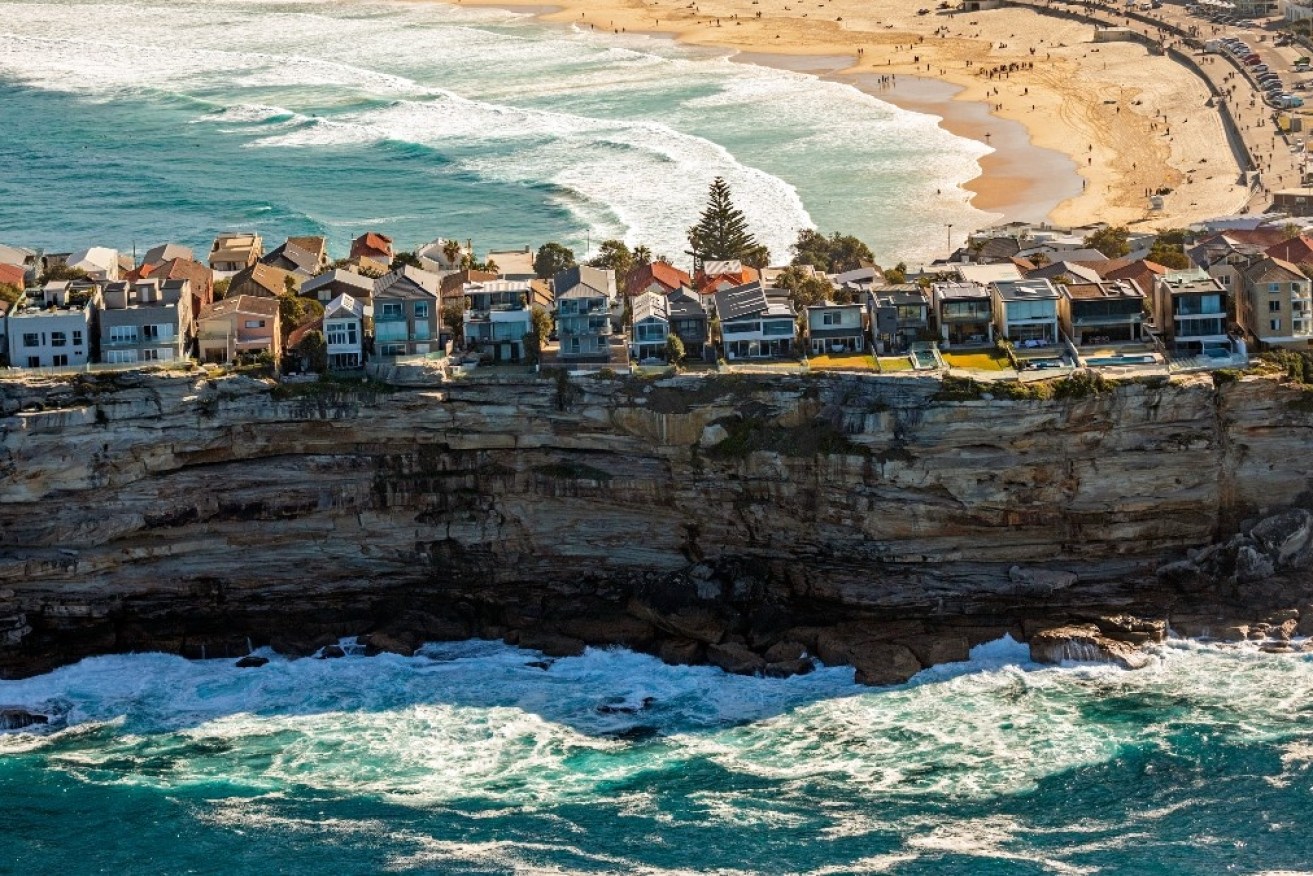Storm surges and erosion pose risk to $25 billion of property: CoreLogic


People residing along Australia's coastlines are living on the edge in more ways than one. Photo: Getty
Increasingly frequent storm surges and erosion could affect the value of thousands of Australian coastal homes within the next 30 years, according to property analytics firm CoreLogic.
As worsening climate change threatens Australian cities with more frequent natural disasters, properties face both physical and financial consequences.
When you combine the values of homes defined by CoreLogic as having either a ‘high’ or ‘very high’ risk to climate change, about $25 billion worth of property is in jeopardy across the country in the next 30 to 60 years.
Despite being exposed to erosion and rising sea levels, coastal homes are extremely popular, with almost half of all Australians living within 10 kilometres of the coastline and one in 10 homes located within a kilometre.
Independent economist and Climate Council councillor Nicki Hutley said Australians are coastal dwellers.
But with extreme weather events occurring more frequently, she said people living or looking to buy in coastal areas need to understand the safety and economic risks.
Coastal areas at risk of losing value
Pandemic lockdowns and border restrictions over the past two years encouraged many Australians to move outside our capital cities, especially as working from home became normalised.
House prices in regional and coastal areas soared as a result.
CoreLogic data shows median values in Queensland’s Gold Coast and Sunshine Coast, for example, rose between 33 per cent and 34.4 per cent in the year to January 2022.
But climate change poses a major risk to the high values long associated with coastal properties, affecting everything from property valuations to bank loan viability and insurance premiums.
CoreLogic data shows the top 10 coastal suburbs with the highest amount of value at risk are in Queensland, Victoria and New South Wales.
All share close proximity to the coast, low elevation, rapid coastal retreat and high property values.
Outside of the top 10, Tasmania, Western Australia and South Australia also have several coastal suburbs classified by CoreLogic as being at ‘very high’ risk of losing property value.
CoreLogic head of consulting and risk management Pierre Wiart said although properties in high-risk areas could still be habitable in 30 years, people should be aware of the possibility of declining values.
“Understanding the coastal risk associated with those properties is important to every owner, potential buyer and, ultimately, our property and financial sectors that are supporting the expansion of new coastal properties in number and in value,” Dr Wiart said.
Increased costs of coastal risks
Although some coastal properties are already experiencing the effects of erosion and rising sea levels, AMP Capital chief economist Shane Oliver said this has not yet been clearly reflected in their prices.
“We have seen parts of Australia subjected to this damage, although it’s early days yet,” Dr Oliver said.
“But from what I can tell, it’s not being significantly factored into property valuations, although buyers are becoming increasingly aware of it.”
If you’re looking to buy an investment property along the coast, Dr Oliver said you might not see a decline in value, but any future gains would likely be lower than those found in surrounding areas.
Prices will also be affected by the changing ways in which banks assess home loan applications and insurers assess risk.
Dr Oliver said there will come a time where it’s “uneconomic” for insurers to insure properties in high-risk or already-damaged locations,
If they do offer insurance, the premiums could become “exorbitant”, especially in areas that have already seen natural disasters.
He said insurance price hikes are reflected in property valuations, and it’s up to home buyers to do their homework and find out how much more money they could end up shelling out for an at-risk property.
Ms Hutley said if a property is deemed uninsurable, this could affect whether a bank is willing to approve a home loan, or the interest rate they are willing to lend at, due to the level of risk.
Mitigating measures
The natural risks associated with coastal locations are nothing new for Australians, with erosion in particular affecting everything from residential properties to surf clubs, Ms Hutley said.
“We’ve seen whole cliff faces basically fall away, and this is a massive problem for many houses that are exposed to this,” she said.
“Particularly along the beachfront is where the erosion happens quite dramatically, because there has been no fortification to take account of the rising tides and storm surges.”
Ms Hutley said local councils of coastal areas are usually aware of the issues, and can take steps to protect properties in the short term by strengthening sea walls, or sandbagging.
As to whether home owners or home buyers should be looking to move further inland, away from the coast, Dr Wiart said people should decide on a case-by-case basis.








